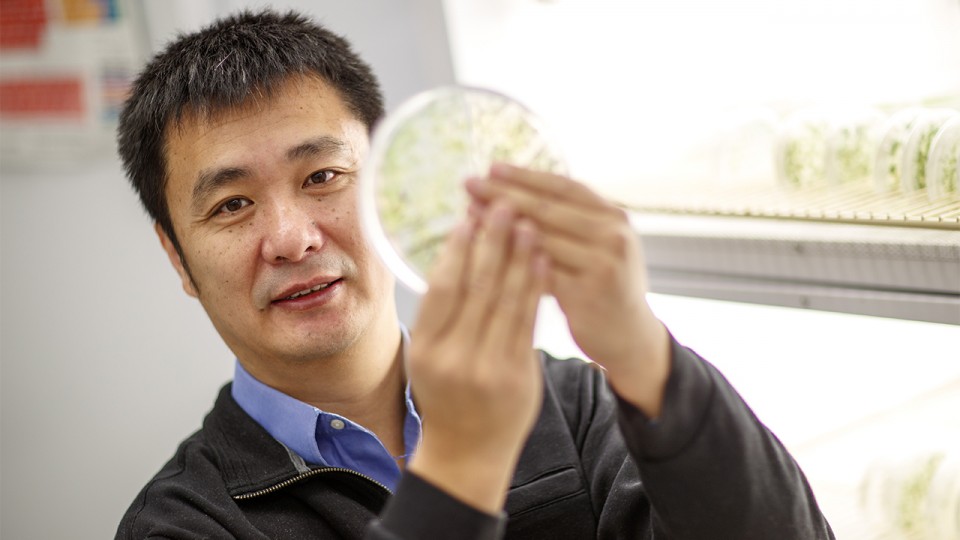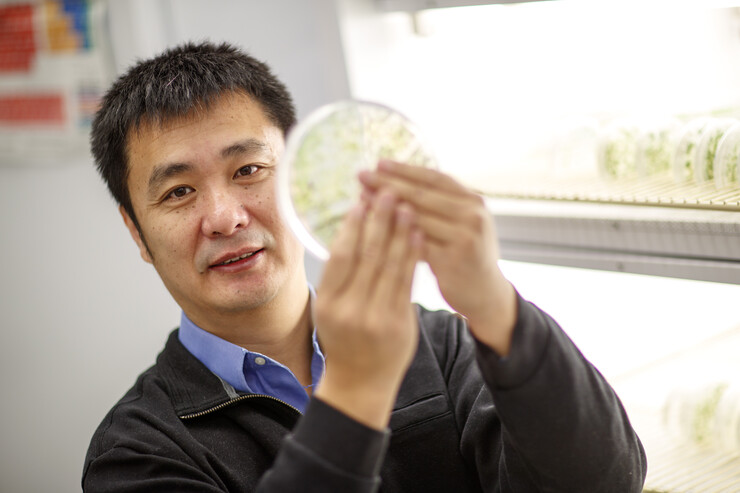· 2 min read
Discovery could bolster traits of soybeans, other crops

A team of Nebraska biologists has discovered an important component plants need to make microRNAs, tiny molecules critical in regulating gene expression.
Despite their vital role, microRNAs are little understood. Uncovering new clues about how plant cells generate them is a step toward better understanding how crops respond to droughts and other stressors.
The team’s findings were published recently in the Proceedings of the National Academy of Sciences. The research follows previous important discoveries Bin Yu, associate professor of biological sciences, and his colleagues have made related to microRNAs.
“MicroRNAs regulate many biological processes, including development and physiology. Consequently, understanding the mechanisms governing microRNA biogenesis is crucial for probing and manipulating related biological processes,” said Yu, a member of Nebraska’s Center for Plant Science Innovation. “The findings can be translated into soybean and other crops to improve important traits.”
MicroRNAs help regulate gene expression by binding to messenger RNAs, molecules that convey a gene’s information to make proteins. Tying up messenger RNAs blocks that process.
Yu and his colleagues discovered a protein that plays a role in the early stages of microRNA creation. Their findings suggest the protein, STV1, may be able to fine-tune microRNA levels to ensure a plant’s normal development and physiology.
STV1 is already known as a vital component in the process of making proteins, though its function and mechanism in that capacity remain unknown. The team’s discovery reveals a second, unrelated role for STV1.
Yu and his team made their discoveries in Arabidopsis, a well-known plant model. But STV1 is found in humans and other organisms, so their findings may help elucidate microRNA processes in other fields as well.
Yu’s co-authors are Nebraska’s Shengjun Li, Kan Liu, Shuxin Zhang and Chi Zhang, as well as colleagues at Fudan University in Shanghai and the University of California, Riverside. The National Science Foundation helped fund this research.








